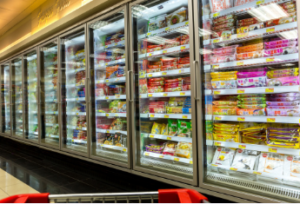Global Frozen Food Exporting
The frozen food market is being driven by rising consumer preference for convenient, high-quality foods that are low in calories and packed with essential nutrients. Furthermore, its long shelf life should further contribute to the growth of this industry over the forecast period.
Europe
Europe’s global frozen food exporting industry is a significant force. Moreover, the region boasts an expansive network of frozen food companies, contributing to keeping Europe healthy and prosperous for residents.
Frozen food is exported to over 50 countries worldwide, making the European Union (EU) a key destination for global producers of this type of product. These range from vegetables and meats to fish and cheeses – to name a few!
 The European Union (EU) has strict regulations for the export of frozen foods. These standards protect consumers from potentially hazardous ingredients, such as high pesticide residues, in food supplies.
The European Union (EU) has strict regulations for the export of frozen foods. These standards protect consumers from potentially hazardous ingredients, such as high pesticide residues, in food supplies.
Furthermore, the EU requires specific details printed on global frozen food exporting product packaging. These must be written in one of the official languages of an EU member state and easily legible for consumers to read. In addition, nutrition labels, net quantities, use-by dates, processes have undergone, and origin must all be included.
Some of the EU’s most basic regulations for frozen vegetable export include maximum pesticide residue levels, set according to product type. If these levels exceed EU regulations, the product can be taken off the market.
Europe boasts a vibrant cultural heritage, making it an attractive tourist destination. Major cities such as Paris, Rome, Barcelona, Madrid, Amsterdam and London are well-known to visitors who visit their renowned museums and galleries. Furthermore, Europe boasts some of the world’s iconic landmarks, like the Eiffel Tower and the Statue of Liberty.
Asia Pacific
Global frozen food exporting is one of Asia Pacific companies’ primary activities. This demand for frozen goods has increased due to high per capita income levels and growing regional purchasing power.
Asia Pacific has seen a boom in the frozen processed meat market due to its cost-effectiveness and ease of preparation. Furthermore, this type of protein provides added nutrition as an alternative to grilling or barbecuing meat.
Japan and South Korea primarily drive the Asian frozen food export sector. Still, it is expected to be further buoyed by expanding emerging markets such as India and China. These nations are becoming more liberalised with their economic policies, improving manufacturing and distribution networks for frozen processed foods.
Consumers in Asia are becoming more conscious about their diets and preferences. To address this need, manufacturers offer frozen foods tailored to specific dietary requirements – including allergen-free options.
Asia Pacific is forecast to lead the frozen ready meals market during the forecast period due to its large population and rapidly developing retail food industry. It presents lucrative opportunities for frozen food manufacturers in the region – particularly China, where quick-service restaurants (QSRs) are opening at an unprecedented rate.
North America
Frozen food is a highly sought-after category of ready-to-eat meals that can be easily prepared at home and saves time. It boasts an extended shelf life compared to fresh produce like vegetables, fruits, or meats. Furthermore, frozen food offers excellent sources of protein and nutrition – perfect for those on a diet or who want a nutritious meal that won’t need cooking.
The global frozen food market is expected to experience substantial growth over the forecast period, driven by increasing demand for quick and healthy meals in various countries worldwide. It is mainly attributed to population growth and urbanisation-induced increases in disposable incomes, shifting consumer eating habits, and rising interest in frozen products.
North America remains the leading contributor to the global frozen food trade, accounting for more than half of all shipments shipped to international markets.
For the past several years, the frozen food industry’s growth has slowed; however, it is anticipated to pick up in the coming years due to increasing demand for frozen foods in Europe and Asia Pacific.
Value-wise, frozen specialty food exports in the United States reached $X million in 2020. Moreover, estimates suggest these figures will grow at an average annual growth rate over five years to get an impressive X%.
Tips for Buying Mirrors
RFID For Asset Tracking
You May Also Like

The Forest Resources Management Program
August 28, 2021
Wildlife and Fisheries Resources Program
August 4, 2019
